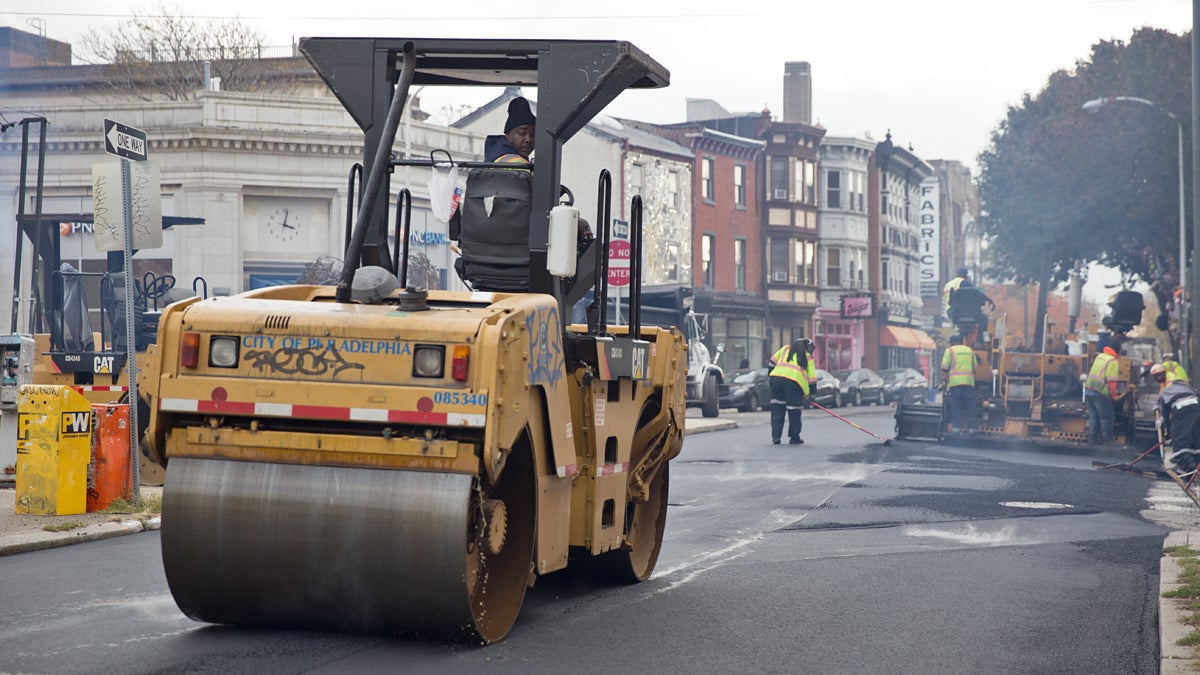How are Pennsylvania’s roads holding up?

A road crew paves 5th Street in Philadelphia, Pa. (Lindsay Lazarski/WHYY)
One in a series explaining key terms and concepts of Pennsylvania government. Today’s topic: roads.
Seeking a better understanding of Pennsylvania’s issues and proposed solutions? Sometimes, complicated jargon and concepts can get in the way. That’s why we started Explainers, a series that tries to lay out key facts, clarify concepts and demystify jargon. Today’s topic: roads.
In 2014, the American Society of Civil Engineers graded Pennsylvania’s infrastructure. It gave the state’s roads a D-. The ASCE considered a few factors when grading Pennsylvania’s roads, including roughness, capacity, and safety.
How does the state measure the roughness of its roads?
Pennsylvania owns more than 41,000 miles of roads, more than most other states.
The Pennsylvania Department of Transportation measures the roughness of those roads on a two-year cycle.
State workers use a vehicle outfitted with sensors (lasers and accelerometers) to measure the bumps and dips on each mile of pavement. PennDOT then uses those measurements to rate each segment as “excellent,” “good,” “fair,” or “poor.”
WHYY is your source for fact-based, in-depth journalism and information. As a nonprofit organization, we rely on financial support from readers like you. Please give today.


